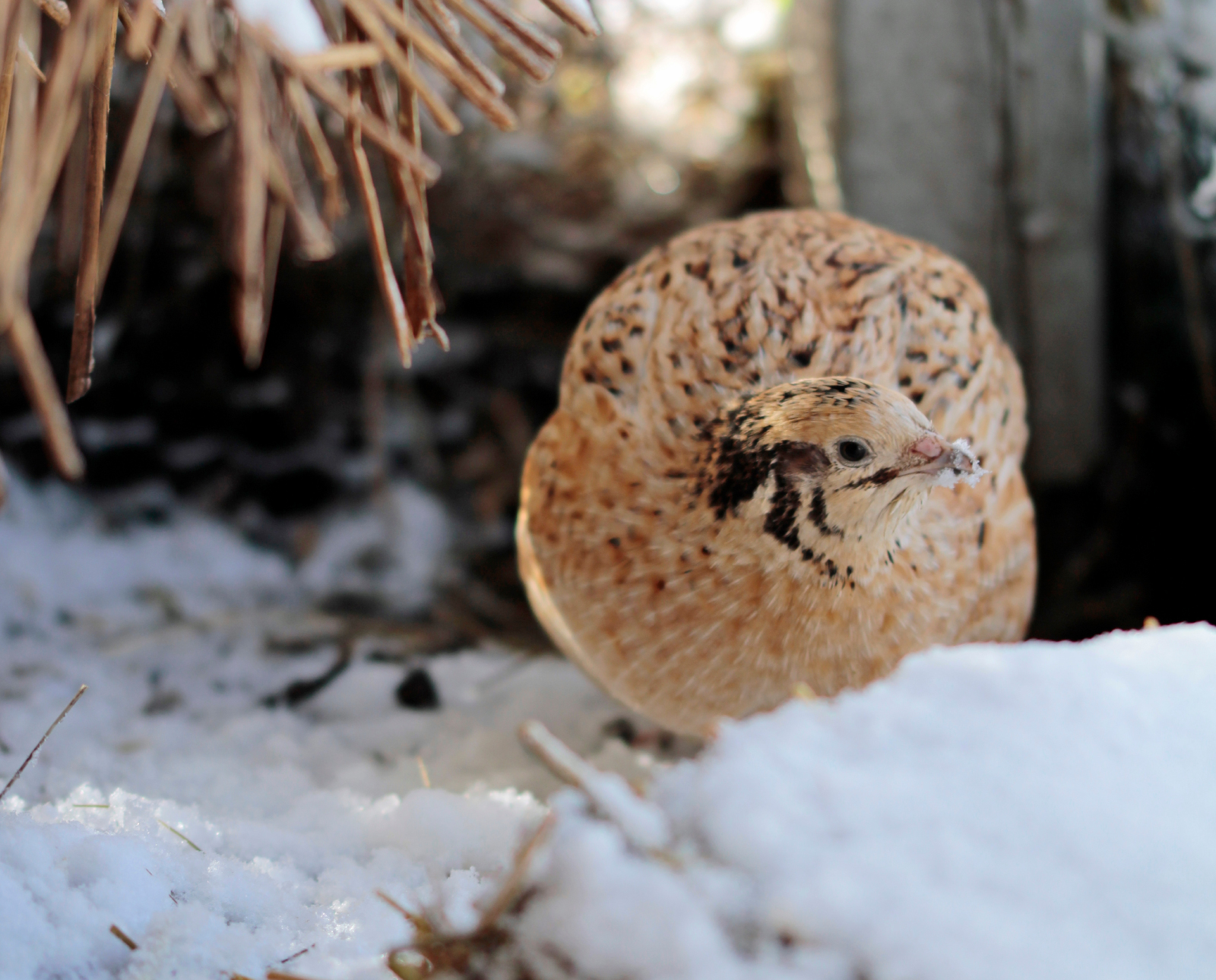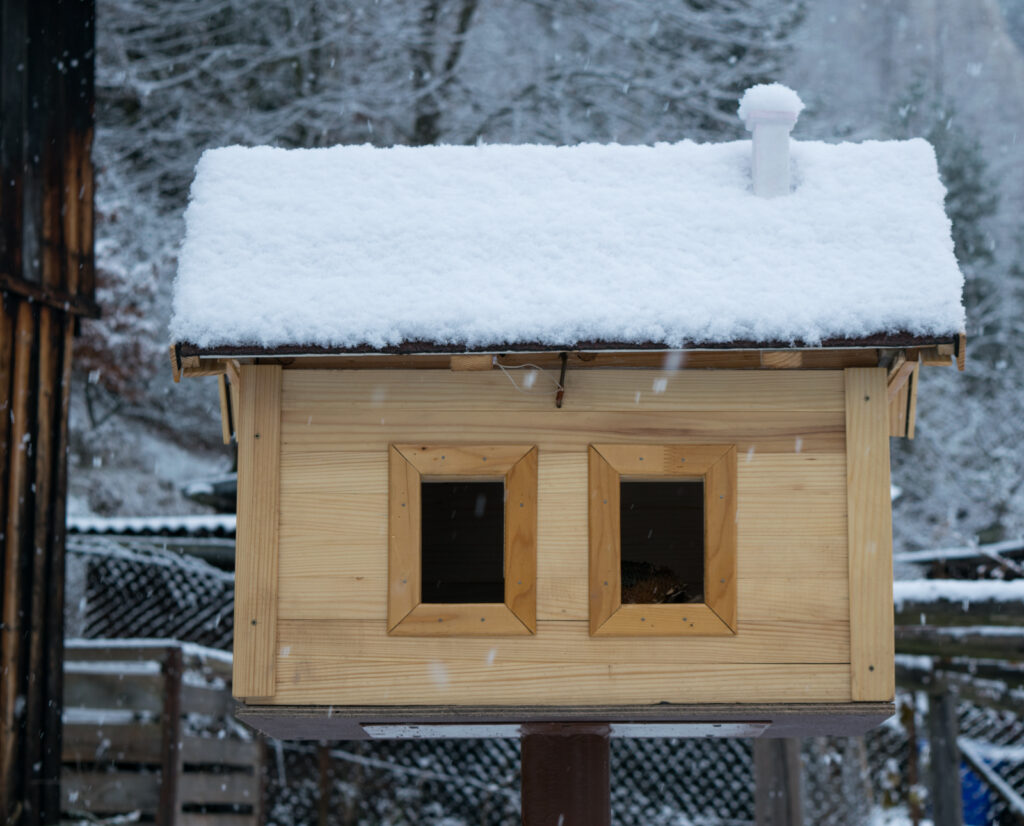
Born and raised in southern Ontario, it wasn't until Mike…
Best practices for keeping coturnix quail warm, safe, and healthy after temperatures drop.
During my first few years of raising domestic Coturnix quail, I culled all my birds shortly before the first significant snowfall. I had understood that a cold spell would freeze my entire quail covey to death overnight. Not wanting to risk that kind of heartbreak, and given I had freezer space, they all met their demise in the name of mercy. Come spring, I’d source an entirely new covey of birds.
In truth, I didn’t need to cull my birds. During those early years, I could have saved myself time and money by tending to my covey over the winter. I simply didn’t know any better; I hadn’t done my homework to understand this species’ hardiness.
Many of us don’t give Coturnix quail the credit they deserve for their ability to survive, and even thrive, in cold temperatures. That said, they do need a little help to do so.

Keep Quail in a Small, Winterized Outdoor Hutch
During the heat of summer, coveys tend to maintain space between individual birds. This behavior, especially in a large hutch, helps them stay cooler than if they were all bunched together. However, in winter, they do just that—stand close to one another to stay warm.
To facilitate huddling, I used my small quail pen—an 8′ x 4′ hutch—as my birds’ overwintering space. Its compact size keeps my fourteen domestic quail close to one another, even during the harshest winter storms.
Read More: Above-Ground versus Ground Housing for Pen-Raised Quail
Half of my small hutch’s top is covered with a thick piece of plywood to keep out rain and snow. Straw bales are stacked alongside half of the hutch as an insulative windbreak. Coturnix quail can handle cold, but they don’t fare well when exposed to bone-chilling winds. The pen also has a small coop attachment, adding another layer of protection from the elements if needed.
Besides the straw windbreak, I fill the coop and the covered portion of the hutch with straw, leaving the rest of the ground bare. Why so much straw? Farms use straw as bedding for large animals because it holds body heat. On our homestead, we use straw bedding in our chicken coop and duck house, and quail can use straw for the same purpose.
Quail Hutches for Extreme Winter Conditions
If your area has harsh winters or heavy snowfall, build a stand-up hutch that fits in a garage or other indoor area. Equip it with a heat lamp positioned outside the hutch to prevent quail from accidentally brushing against the bulb and close enough to gently warm your birds.
My outdoor pen doesn’t have a heat lamp because my quail fare well in their thick layer of straw. Straw and heat lamps don’t mix, and you don’t want to wake up to find your entire covey cooked because the heat lamp ignited the straw.
Feeding and Watering Quail in Winter
Another step to help quail through winter is to look at their diet. Our quail eat a steady supply of turkey grower feed available at local co-ops or feed mills. In winter, I boost their protein intake with dried mealworms and black soldier fly larvae. This extra protein gives the birds a boost to keep their “furnaces” burning.
As you might expect, keeping water from freezing can be a challenge. I pour hot water into their waterer and place it in a wind-sheltered area, such as behind the straw bales, so it seldom freezes during the day. At night, I remove the waterer to keep it from freezing and breaking, replacing it in the morning.
Managing Sick Quail in Winter
Anyone carrying their covey through the winter should watch for health issues. Sick quail generally don’t last more than a day, and several ailments can afflict them.
When I assess my quail’s health, I look for birds that have separated themselves from the group, exhibit lethargy, or refuse to eat. These behaviors are red flags in winter, especially not eating, since quail consume more food more frequently during the colder months.
As I mentioned, sick birds don’t last long. If I see a bird that’s unwell, I dispatch it to prevent prolonged suffering.
Domestic Quail Will Behave Like Wild Quail to Increase Hardiness
My first winter keeping quail was a stressful time. I wasn’t sure what to expect, but the birds seemed to know exactly what to do in response to varying winter conditions.
On sunny days, they tend to spread out, catching as much sun as possible and staying active until evening temperatures drop. On exceptionally cold or snowy days, they puff up their feathers and huddle close for warmth, just as I suspect wild quail might in similar conditions.
Last winter, daytime temperatures stayed around -24°C (-11°F) for several days in a row. The quail literally buried themselves under the straw in their coop attachment until the weather improved, only emerging to eat.
I was astonished by how quickly and naturally my covey reverted to basic wild quail instincts. During that cold spell, I went out to feed them in the morning, and their little heads popped out of the straw, one by one, before they emerged to eat. It was uncanny—and adorable.
Keep Your Quail Covey This Winter
Keeping quail in winter can be highly rewarding. It highlights the resilience of domestic quail, who, when given the opportunity, will revert to their natural instincts. With a helping hand, your covey can flourish during winter. Remember to provide extra insulation against wind and snow, supplement their feed with high-protein snacks, and ensure they have a clean source of unfrozen water accessible during daylight hours.
Follow these simple steps, and you’ll witness firsthand just how tough these little birds truly are.
Born and raised in southern Ontario, it wasn't until Mike was in his late twenties that he started hunting and immediately took a strong liking to the pursuit of small game. Snowshoe hare, cottontails, eastern grey squirrels, grouse, and woodcock all have a place in his heart. When not in the woods, Mike is on the water with a fly rod chasing fish with flies that I tied from the animals he's hunted. What a life!



